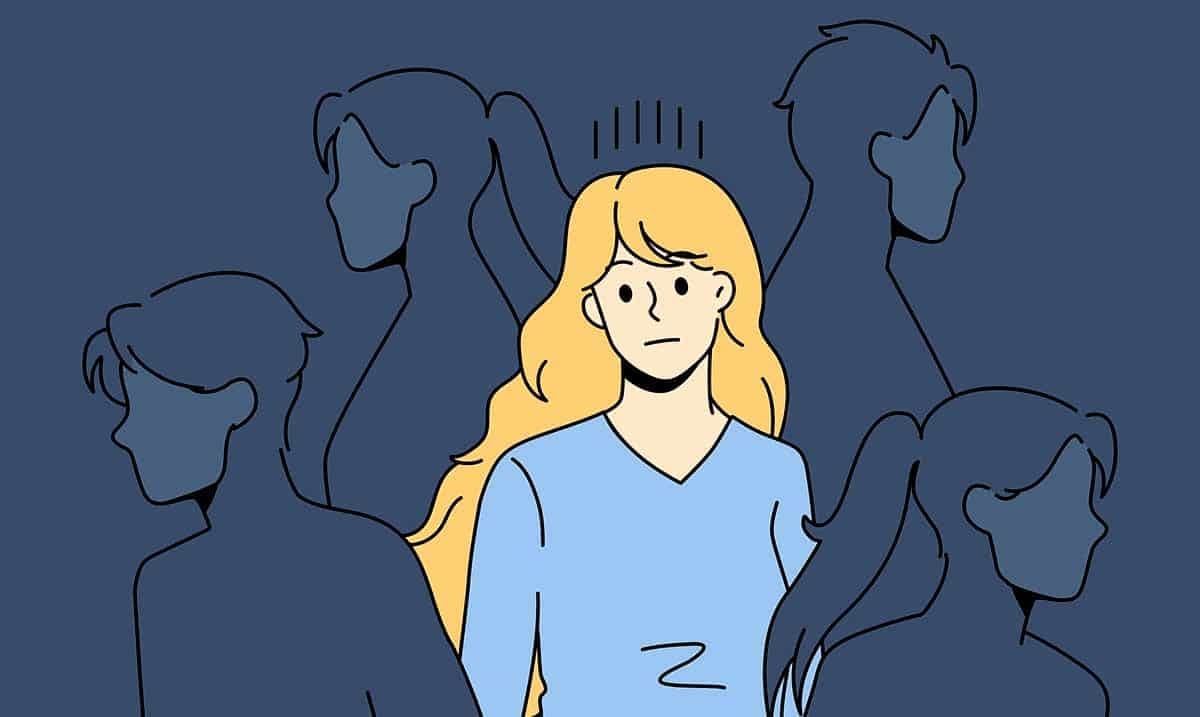Borderline personality disorder (BPD) is a personality disorder characterized by intense and unstable mood, alongside an immense fear of abandonment, that can oftentimes be projected onto others. To the person with BPD and the people around them, this projected fear of abandonment can be extremely frustrating and even downright painful.
Actually, the fear of abandonment in BPD is so intense that it is one of the defining traits of the disorder. The current prevalence of BPD in the general population is currently over 1.4% and most of those who have BPD also have other co-occurring disorders. While experts have yet to pin down one source, there are a number of contributing factors including environmental, social, cultural, and genetic, and many psychologists have found major links to trauma in most people who suffer from the disorder.
While you might say that we all have a major fear of abandonment, the fear of abandonment rooted in this disorder goes far beyond not wanting to be alone. Those suffering from BPD fear abandonment so much, that they ultimately end up projecting those fears onto pretty much anyone that gets close to them. For a good partner or friend, or family member who is doing everything within their power to help alleviate the pain being experienced by the person suffering from BPD- this can be devastating.
In some cases, those who have BPD will become so convinced they will be abandoned anyways, that they end up running away from the person. Put simply, their efforts to avoid abandonment can be downright frantic.
Let us explore an example of this for context. Lucy and her boyfriend Leo have been dating for eight months. Leo and Lucy are spending time together, and Leo tells Lucy he has to leave early tonight because he has a meeting at work at 5:00 am. Immediately, Lucy becomes edgy. Her entire demeanor changes. Leo can tell she is upset and tries to calm her. “I promise, I wouldn’t leave unless I had to. This meeting is very important for my work. It could push me towards a great promotion.”
Lucy begins to cry. “I have felt you pulling away from me all day. Earlier when I reached for your hand, you didn’t even acknowledge me. And you just seem so distant. I know you are going to leave me. I can feel it. That’s why you are leaving early. Please don’t leave. Just stay here.”
Leo feels concerned because he has not tried to pull away. He simply thought they were having a relaxed day together. He tries to explain, but nothing will calm Lucy down other than staying with her later which Leo cannot do. He leaves, and she follows him out of the car. “FINE just leave me. Everyone else does. You never loved me did you?!” she screams with tears streaming down her face.
Leo gets in his car and pulls away. Lucy then messages him every 5 minutes until he gets home and even after that. Eventually, Leo has to cut off his phone. Lucy spends the rest of the night imagining she will never see Leo again. The next day, when she has calmed down, Leo messages her.
This might seem quite extreme, for those who have never encountered a situation like this, but as I said before, the fear of being abandoned can push someone with BPD to act in extreme ways. Some even break their relationships off, to avoid a perceived abandonment. Ultimately, these behaviors can make it quite difficult for someone who is suffering from BPD to forge meaningful and long-lasting relationships.
So what can the person who suffers from BPD do?
Unlike most other personality disorders, BPD IS treatable and in many cases, curable. Dialectical behavioral therapy is a therapy created for people with this disorder and teaches interpersonal effectiveness skills and other useful skills to help alleviate many of the symptoms of the disorder which are most disruptive. Additionally, medications can also be prescribed for the treatment of some symptoms. And talk therapy can also be extremely helpful.
What can their loved ones do?
It might be beneficial for partners and close family to attend therapy sessions as well and to do research on how to interact with the BPD sufferer when they are acting erratically. Ultimately, it’s important to remember, that you cannot cure them. They will have to do the work for themselves. Sometimes, it will be difficult to be supportive without some form of therapy that will teach you how to handle certain triggers and problems experienced by the individual who is suffering. Because BPD is a disorder that is a combination of many symptoms, some symptoms are harder on some than others. So, it’s not a one-sized-fit disorder.
Even still, doing adequate research will be extremely beneficial.

